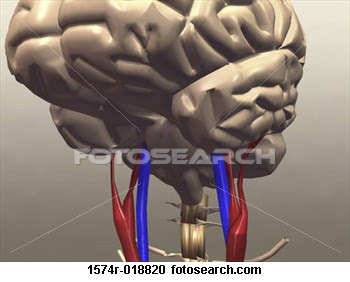BLOOD CLOTS
1 Kings 2:37
Viewing the 1769 King James Version. Click to switch to 1611 King James Version of 1 Kings 2:37For it shall be, that on the day thou goest out, and passest over the brook Kidron, thou shalt know for certain that thou shalt surely die: thy blood shall be upon thine own head.
Blood Clots
Definition
A
blood clot is a thickened mass in the blood formed by tiny substances
called platelets. Clots form to stop bleeding, such as at the site of
cut. But clots should not form when blood is moving through the body;
when clots form inside blood vessels or when blood has a tendency to
clot too much, serious health problems can occur.
Description
As
soon as a blood vessel wall is damaged—by a cut or similar trauma—a
series of reactions normally takes place to activate platelets to stop
the bleeding. Platelets are the tiny particles in the blood released
into the bone marrow that gather together and form a barrier to further
bleeding. Several proteins in the body are involved in the platelets
clotting process. Chief among these proteins are collagen, thrombin, and
von Willebrand factor. Collagen and thrombin help platelets stick
together. As platelets gather at the site of injury, they change in
shape from round to spiny, releasing proteins and other substances that
help catch more platelets and clotting proteins. This enlarges the plug
that becomes a blood clot. Formation of blood clots also is called
"coagulation".
The series of reactions that
cause proteins and platelets to create blood clots also are balanced by
other reactions that stop the clotting process and dissolve clots after
the blood vessel has healed. If this control system fails, minor blood
vessel injuries can trigger clotting throughout the body. The tendency
to clot too much is called "hypercoagulation". Anytime clots form inside
blood vessels, they can lead to serious complications.
The formation of a clot in a blood vessels may be called thrombophlebitis.
The term refers to swelling of one or more veins caused by a blood
clot. Although some clots occur in the arms or small, surface blood
vessels, most occur in the lower legs. When the blood clot occurs in a
deep vein, it is called deep vein thrombosis,
or DVT. As many as one of every 1,000 Americans develops DVT each year.
The danger of DVT comes when pieces of the clot, known as emboli, break
off and travel through the bloodstream to an artery.
A blood clot that blocks an artery to the brain can cause a stroke. If the clot blocks blood flow to the lungs pulmonary embolism can occur. A blood clot that blocks a coronary artery can cause a heart attack. Certain people are at higher risk for blood clots than others; surgery, some injuries, childbirth
and lying or sitting still for extended periods of time put people at
higher risk, as do inherited disorders. Once a person has a blood clot,
he or she may have to take bloodthinning drugs to prevent clots from
recurring. Men and women are at similar risk for blood clots. A recent
study in Austria found that men run a higher risk of recurring blood
clots than women, though the reason is unknown.



Comments
Post a Comment